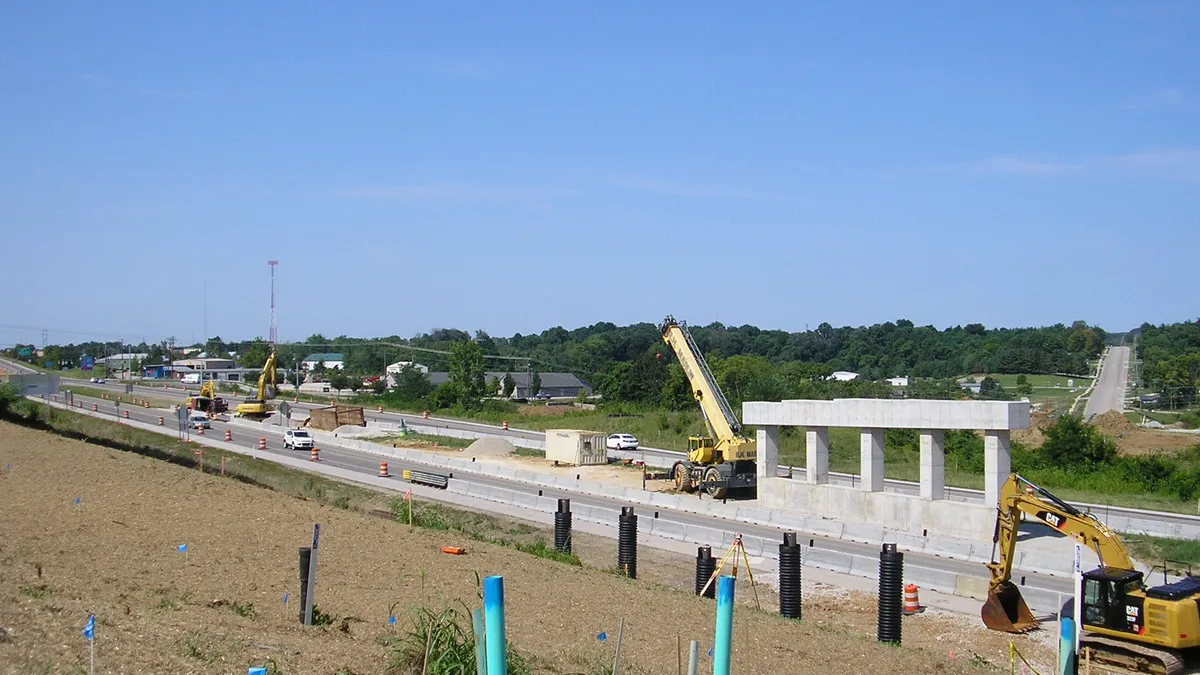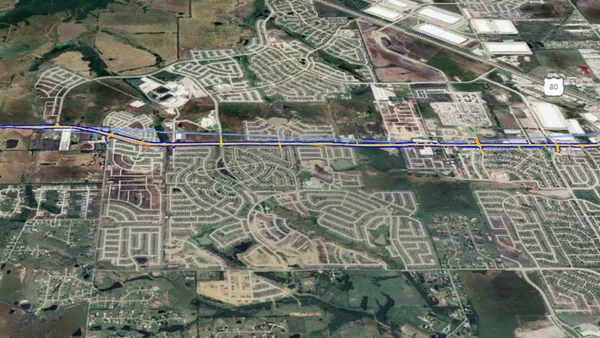Dive Brief:
- Indiana Gov. Eric Holcomb this week unveiled a plan, part of his Next Level Connections program, that will see the state invest $1 billion into a variety of infrastructure projects next year.
- Projects under the plan include $600 million to fast-track completion of Interstate 69 (Section 6) by three years; $190 million for state highway improvements like new interchanges, bridge improvements and road resurfacing; $100 million for high-speed, affordable broadband service to rural areas and other locations; $90 million for hiking, biking and walking trails; $8 million for a potential fourth water port site along the Ohio River in Lawrenceburg, Indiana; and an undisclosed amount to increase commuter rail service, among other measures.
- The state will raise money for the program by increasing tolls on heavy vehicles by 35%. The Indiana Toll Road Concession Co. will pay the extra money out in three annual installments ($400 million, $300 million and $300 million) beginning in 2019 and will also make $50 million of improvements to the Indiana Toll Road, including a smart truck parking system, more overhead message boards, cameras and variable speed signs.
Dive Insight:
Including broadband and trails in the state's infrastructure initiative will provide opportunities for a wider range of contractors, not just those typically associated with the category of infrastructure, such as paving and concrete companies.
The topic of increased access to broadband featured heavily in the discussion around President Donald Trump's $1.5 trillion infrastructure plan, the details of which he released in February of this year. The administration designated $50 billion for rural infrastructure, and according to the White House, communities in receipt of federal funding could use some or all of that money on broadband.
Like Holcomb, the administration maintains that beefing up rural broadband will increase economic opportunity by making those areas more attractive to developers and businesses that prioritize internet access.
Recreational infrastructure — parks, trails, green spaces — also play a role in economic development, according to the National Recreation and Park Association. Aside from directly employing members of the community and local contractors, opportunities for recreation and outdoor activities increase the perceived quality of life, making those areas more attractive to companies looking to relocate. These amenities can also help businesses retain employees, an important consideration given that the U.S. is currently in the midst of a skilled worker shortage across many industries, including construction.














